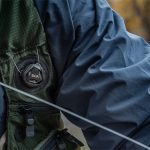Exercise walking, which experienced 1.5% growth in 2005, remains the No. 1 participation activity surveyed by the National Sporting Goods Association (NSGA), a position it has held since 1990. Data contained in NSGAs annual “Sports Participation Series I and II” reports, which are now available, shows 86.0 million Americans walked for exercise in 2005.
Swimming, with 58.0 million participants, an increase of 8.5%, regained the No. 2 spot that it had lost in 2002. Camping, which had replaced swimming in the runner-up spot, dropped to fourth (46.0 million participants, down 16.8%) behind exercising with equipment (54.2 million, up 4.0%). Bowling rounded out the top five with 45.4 million (+3.5%).
Classic fitness activities included in the survey showed healthy growth in 2005. The fastest growing fitness activity was weightlifting, which increased 35.4% to 35.5 million participants and a spot in the top 10 for the first time at No. 9. Working out at a club ranks 10th with 34.7 million (+9.2%), aerobic exercising, 11th with 33.7 million (+14.4%), and running/jogging 14th with 29.2 million (+9.5%).
“On top of 2004s increases in fitness participation, were seeing a trend that Americans are taking their health and fitness much more seriously,” NSGA Vice President of Information & Research Thomas B. Doyle said. “Five of the top 14 activities in our survey are fitness related, and it shouldnt be too many years before exercise walking becomes the nations first 100-million-participant activity.”
Team sports duplicated their 2004 performance in 2005, with six of seven sports showing increases. Tackle football, which had slipped by 5.3% in 2004, bounced back with a 15.5% increase in 2005 to 9.9 million participants. Other double-digit increases came in softball (+12.7% to 14.1 million) and volleyball (+11.9% to 13.2 million). Basketball was the highest-ranking team sport at No. 12 with 29.9 million participants (+7.3%). Soccer (14.1 million) increased 6.4%. Ice hockey showed a 0.4% increase to 2.4 million.
The only team sport to show a decline was baseball, down 7.7% to 14.6 million. Cheerleading, an activity related to many of these team sports and a relatively new competitive sport in many states, dropped 13.2% to 3.3 million.
For this survey, a participant is someone age seven or older who takes part in the sport or activity more than once in a calendar year. “Sports Participation in 2005 Series I and II” cover 41 sports, recreation and fitness activities.
These reports have been published by NSGA for more than 25 years. They provide data on total 2005 participation, frequency of participation, and average number of participation days. Single-time participation, which is not counted in the total, is included separately.
Demographic data on participants includes gender, age, mean age by gender, gender by age, household income, and education of male and female head of household. Geographic analysis includes nine census regions and metro area size. Presence of children is also noted, and Internet usage is reported by gender and age of participants.
In addition to Series I and II, state-by-state data is available in “Sports Participation in 2005: State-By-State.” This report covers 33 sports and activities, and provides data on total participation, frequency of participation and total participation days.















